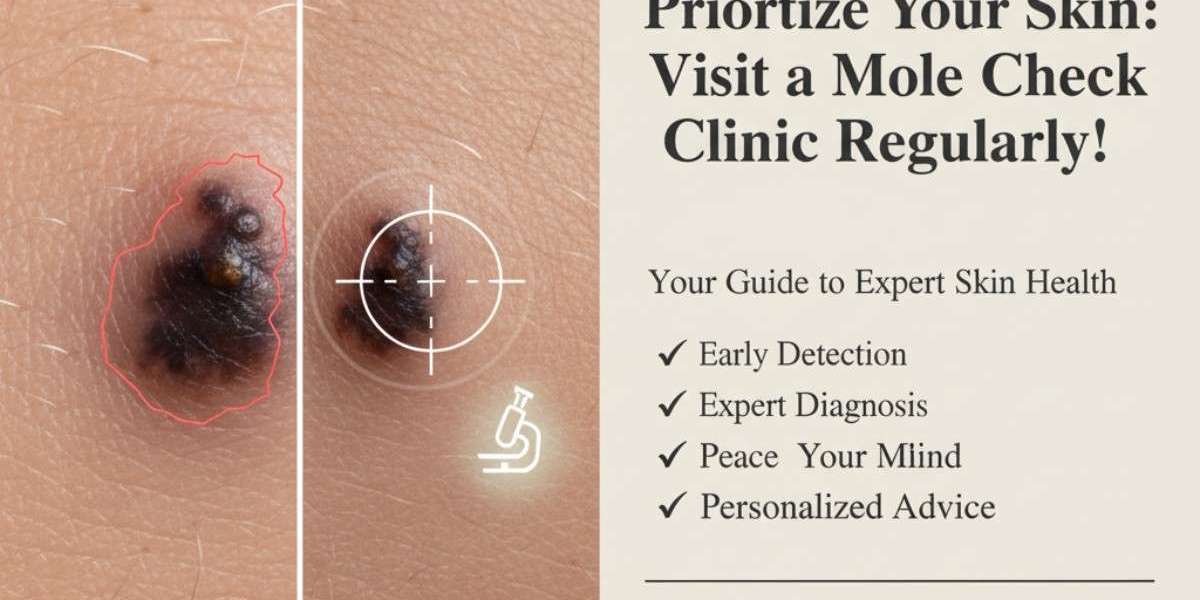In an age where skin health awareness is paramount, the importance of monitoring moles and suspicious skin lesions cannot be overstated. A visit to a dedicated mole check clinic is not just a preventative measure; it's a vital component of your overall health strategy, playing a critical role in the early detection of skin cancer, particularly melanoma.
The Silent Threat: Understanding Moles and Melanoma
Most moles are benign (non-cancerous) and pose no threat. However, some can change over time, and new moles can appear that may be atypical or, in rare cases, develop into melanoma.
This is precisely why regular self-checks and professional assessments at a mole check clinic are so crucial.
Melanoma is the most serious type of skin cancer. If detected and treated early, it is highly curable. However, if left unchecked, it can spread to other parts of the body, becoming much more dangerous.
What to Expect at a Mole Check Clinic
A professional mole check is a comprehensive examination of your skin, performed by a trained dermatologist or specialist.
Detailed History: The clinician will first take a thorough medical history, asking about your personal and family history of skin cancer, sun exposure habits, tanning bed use, and any changes you've noticed in your moles.
Full Body Skin Exam: You will be asked to undress (usually leaving underwear on) so the clinician can meticulously examine your skin from head to toe, including areas often missed during self-checks, such as the scalp, between toes, and even genitalia.
Dermoscopy: A specialized handheld device called a dermatoscope is used to magnify and illuminate moles, allowing the clinician to view structures and patterns beneath the skin's surface that are invisible to the naked eye. This greatly enhances the accuracy of diagnosis.
Digital Mapping (Optional): Some advanced clinics offer total body photography or mole mapping. This involves taking high-resolution images of your entire skin surface, allowing for precise comparison of moles over time. This is particularly useful for individuals with many moles or a history of atypical moles.
Biopsy (If Necessary): If a mole appears suspicious, the clinician may recommend a biopsy. This involves removing a small sample of the mole (or the entire mole) for laboratory analysis.
Who Should Visit a Mole Check Clinic Regularly?
While everyone can benefit from routine skin checks, certain individuals have a higher risk of developing skin cancer and should be particularly diligent:
Individuals with many moles (more than 50-100).
Those with atypical or dysplastic moles.
People with a personal or family history of melanoma.
Fair-skinned individuals who burn easily.
Anyone with a history of significant sun exposure or sunburns, especially blistering ones.
Individuals who use (or have used) tanning beds.
Anyone who notices a new mole or a change in an existing mole (following the ABCDE rule).
The ABCDE Rule for Self-Checks
Between professional visits to a mole check clinic, empower yourself by performing regular self-examinations. Look for any changes in your moles, keeping the ABCDE rule in mind:
A - Asymmetry: One half of the mole does not match the other half.
B - Border: The edges are irregular, ragged, notched, or blurred.
C - Color: The color is not uniform and may include shades of brown, black, tan, white, red, or blue.
D - Diameter: The mole is larger than 6 millimeters (about the size of a pencil eraser), though melanomas can be smaller.
E - Evolving: The mole is changing in size, shape, color, or elevation, or any new symptoms appear, such as bleeding, itching, or crusting.
Choosing a Reputable Mole Check Clinic
When searching for a clinic, consider these factors:
Qualified Professionals: Ensure the clinic is run by or employs experienced dermatologists or practitioners specializing in skin cancer detection and surveillance.
Technology: Look for clinics that use dermoscopy and, ideally, offer digital mole mapping for enhanced accuracy.
Patient Reviews: Check online reviews and testimonials for positive experiences and professionalism.
A proactive approach to skin health, combining regular self-checks with professional examinations at a dedicated mole check clinic, is your best defense against skin cancer. Don't underestimate the power of early detection – it can save your life.



